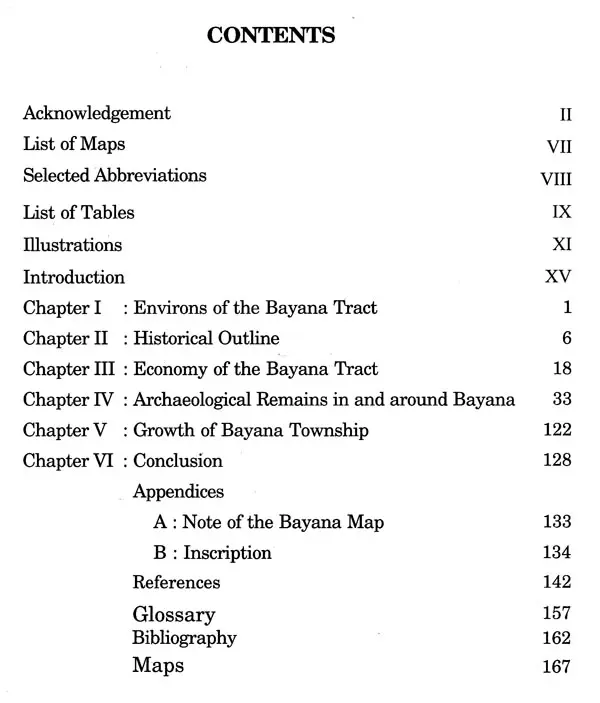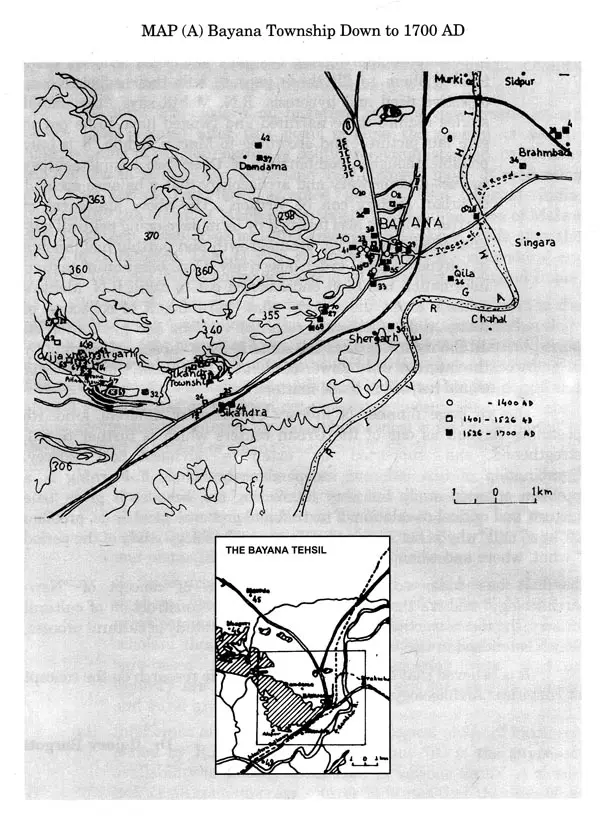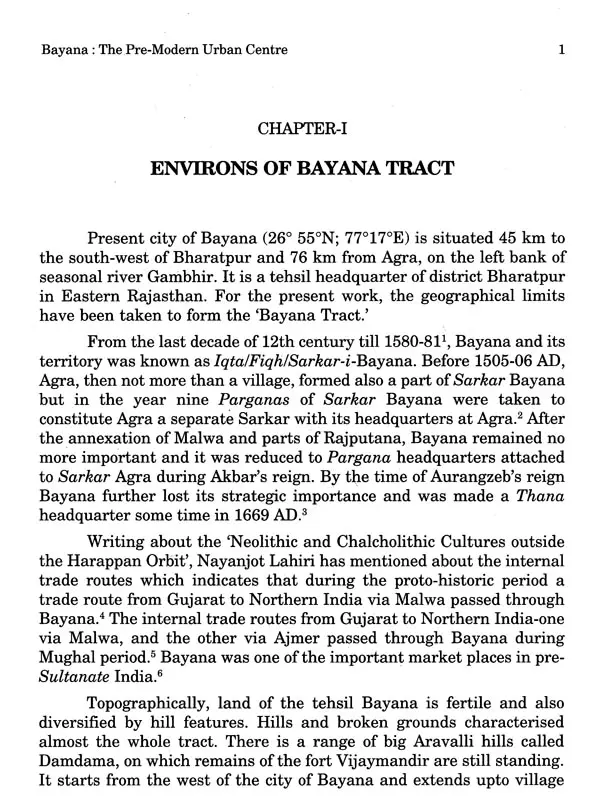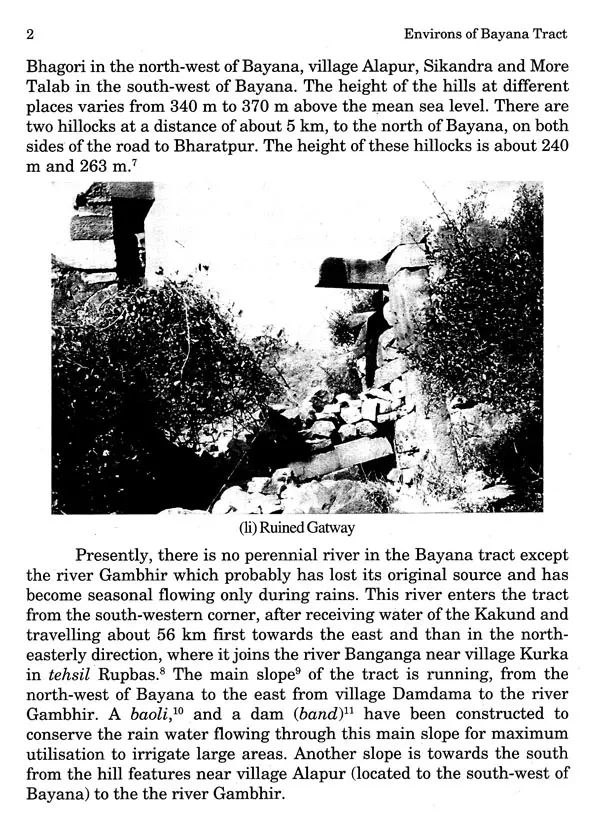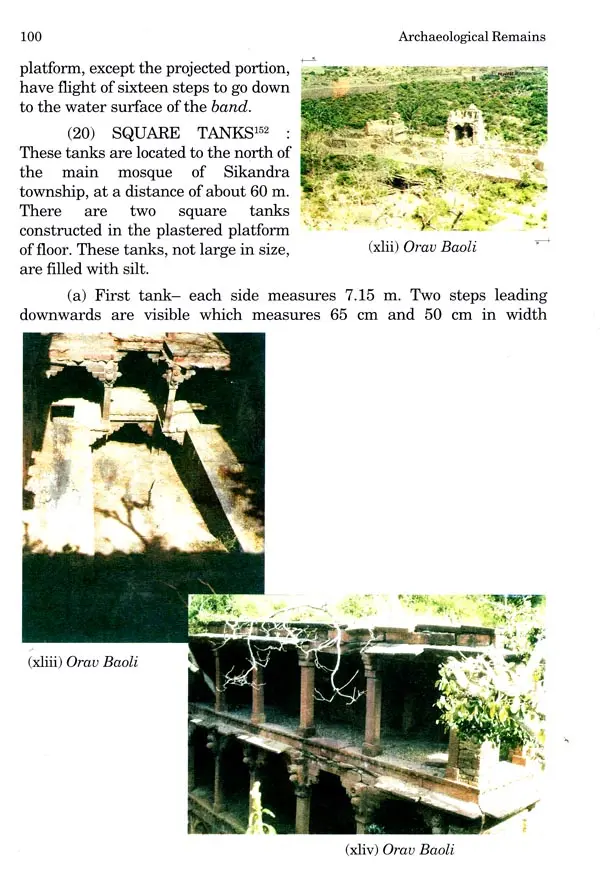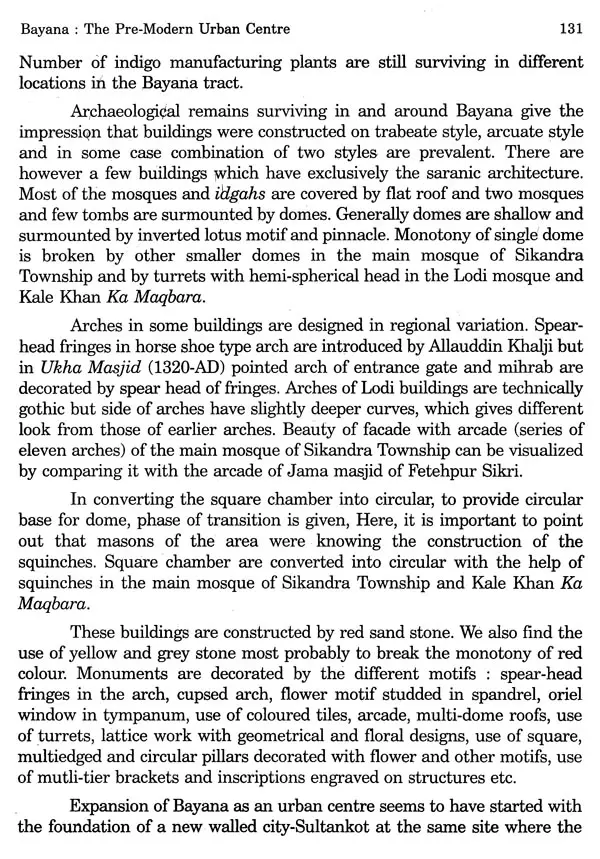
Bayana : A Concept of Historical Archaeology
Book Specification
| Item Code: | UAD385 |
| Author: | Rajeev Bargoti |
| Publisher: | Publication Scheme Jaipur |
| Language: | English |
| Edition: | 2003 |
| ISBN: | 9788186782729 |
| Pages: | 182 (Throughout Color and B/W Illustrations with Map) |
| Cover: | HARDCOVER |
| Other Details | 11.00 X 9.00 inch |
| Weight | 740 gm |
Book Description
Importance of rich cultural heritage of Rajasthan is well known. The present work is an attempt to add new chapter in it. This place was 'hidden in contemporary historical texts and very first time is being tried to bring out in limelight. This work is based on interpretation of textual information as well as use of archaeological material to avoid subjectivity and twists to fill the gaps in the texts. He has studied more than eighty historical monuments in and around Bayana. This book is divided into six chapters i.e. Environs of the Bayana Tract, Historical Outline, Economy of the Bayana, Archaeological monuments in and around Bayana, Growth of Bayana Township and Conclusion and Appendices.
The work contains detailed description monuments, protected by Archaeological Survey of India, with their photographs and ground plans. Dr. W. H. Siddiqui, Ex-Director Archaeological Survey of India, commented "this work is of national importance" because after General A. Cunnighum very first time all monuments are studied by an individual.
During the course of study of History of Medieval India, we have come across, a number of times, the urban centre Bayana, of course with passing references. Bayana is strategically located in north-eastern part of the Udaipur-Gwalior geographical region. It is important from socio-cultural, economic and administrative point of view, also it had enjoyed the status of iqta, shiq, and sarkar headquarter till the subjugation of Malwa and Rajputana by the great mughal Akbar. An urge to do objective and scientific work forced me to do research on Bayana one of the neglected urban centres- though General Alexander Cunninghum listed and worked on limited monuments of the place sometime in 1882-83. Present book is a revised form of my Ph. D. thesis. (The Centre of Advanced Studies, Department of History, Aligarh Muslim University, Aligarh, suggested the title "THE BAYANA TRACT: AN ARCHAEOLOGICAL SURVEY OF MUGHAL REMAINS" as Ph. D. Course programme which was awarded in 1996).
For reference and information in many aspects, the contemporary Persian Chronicles, Travellors' Account, The English Factory Records, Epigraphical Work and a very important unpublished Rajasthani document was studied and quoted. After having collected textual information from various sources available in Indian libraries we performed archaeological survey of all remains down to 1700 AD. Location of monuments, architectural description and detailed ground plans are sketched and prints of a few inscriptions which were noticed by the ASI but unpublished were also studied to support the examination of archaeological remains studied, photographs with minor details are also used.
With the concept of Historical Archaeology we developed Ph. D thesis in the form of the present book, in which the Sultanate period in also included. An attempt is made to depict the total picture of Bayana -geography of the place, political out-line, economic condition, detailed archaeological survey of monuments and urban growth.
The term 'Pre-modern' on historical point of view means an era before 1750 because after this point of time the concept of society, interpretation of religion, nature of polity and administration, continuous innovations in science and technology had changed mode of production and war tactics had been accepted globally. But Mughal India, particularly the region of Mughal territory, prior to subjugation of Malwa and Rajputana, faced crisis in 18th Century in all sphare of life after the death of Aurangzeb. That is why we have mentioned 'Pre-modern' era down to 1700 AD in this particular case of study as part of Mughal India.
We are using 'Historical Archaeology', the only suitable term in the place of Medieval Archaeology. Like Archaeology, Historical Archaeology is also independent branch of learning which starts with historical period and like historical period it may also be divided into periods according to findings and layers. Published research work indicates that the period and area of research has so far been consciously or unconsciously neglected. Hence preference and interest for the archaeological study of the period' is the most desired subject or theme because:-
(i) the finds of uppermost layers glazed ware, coins, glass objects and type of bricks obviously indicates the medieval period (see annual reports published in Indian Archaeology - A Review 1969-70, 1970-71 and 1971-72 page 7 and plate XIX; page 15 and plates XXXIV-V and page 21 respectively.
(ii) So for as urban centers are concerned researches are confined to them. Archaeological investigation of medieval India has great potential so it is also 'called urban archaeology by some scholars though in present work archaeological remains of agro-based industry-indigo manufacturing vats of 17th Century are still traceable of ruins are surviving in remote and aural area.
(iii) Indifferent attitude towards archaeological study of medieval period by R.N. Mehta points out that '(it) is the supposed availability of written documents in various forms'. A closer look at all contemporary sources indicates that they are very important though having big gaps and some scholars have twisted them to fill these gaps to suit their subjective or objective need and hypotesis. R.N. Mehta says, "the untold stories require to be narrated and twisted have to be out to give fair picture," and according to Martin Biddle "it is only possible though a combination of these two complementary sources-documentary and archaeology that a balance account of urban History can be written". The above statement of Martin Biddle is also testified by us in developing political out-line, economic history, urban-growth and putting monuments in chrononological order objectively. Corroboration of textual information has been done/carried out to fulfill R.N. Mehta's remark about the concept that, "no amount of collection of texts, study of different recorded versions and meditation on all the meanings that the sentences are capable of yielding by the internet word power of abhidha, vyanjana, and lakshana would help us in these matters."
Due to large number of literary evidences- of different kinds, we postulate Bayana as one of the Urban centers which is further tested, strengthened and supported by extensive archaeological survey. Combination of two different independent branches of learning is a problem oriented study but very interesting too, because it gives 'true picture' and critical co-relation of textual and archaeological finds, problem of "how" and "why" is better solved as in the archaeology study of the period " what, where and when" have the little relevance. It has wider scope for the application of concept of "New-Archaeology" and its three ultimate goals: the reconstruction of cultural history, the reconstruction of past life way and the study of cultural process, which is touched in this work.
It is believed that this work would stimulate research on the concept of Historical Archaeology.
